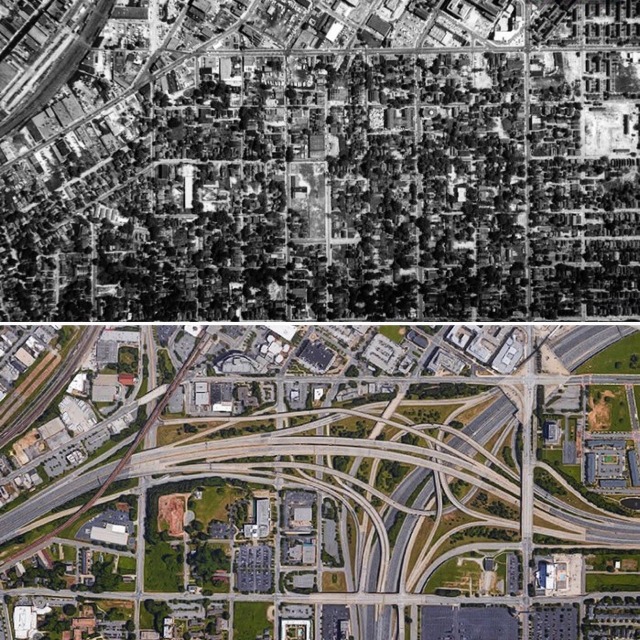One cannot underestimate the massive societal changes induced by the decision to embrace car-dependent urbanism in the middle decades of the 20th century. In a short time it fundamentally transformed cities throughout the world. That disruption was most pronounced in the US and Canada but impacted many other countries as well. The paradigm is only now shifting back, in fits and starts, to a more balanced approach to personal mobility, but the legacy of car dependency will take a long time to overcome.
Although the process took off in a big way after WW2, the idea of centering urban life around the car was developed in the 1920s and 1930s, with thought experiments by architects and urbanists such as Le Corbusier's infamous Plan Voisin and Frank Lloyd Wright's Broadacre City. But what kind of POD would be necessary to prevent their implementation? Would something as massive as removing WW2 be necessary, or could it be achieved with a smaller POD? Was the rise of informally segregated detached-housing suburbs an inevitable trend in the US? I'd like to know what you folks think.

Atlanta, before and after.
Although the process took off in a big way after WW2, the idea of centering urban life around the car was developed in the 1920s and 1930s, with thought experiments by architects and urbanists such as Le Corbusier's infamous Plan Voisin and Frank Lloyd Wright's Broadacre City. But what kind of POD would be necessary to prevent their implementation? Would something as massive as removing WW2 be necessary, or could it be achieved with a smaller POD? Was the rise of informally segregated detached-housing suburbs an inevitable trend in the US? I'd like to know what you folks think.

Atlanta, before and after.



